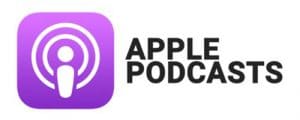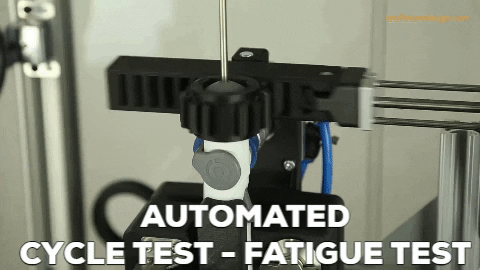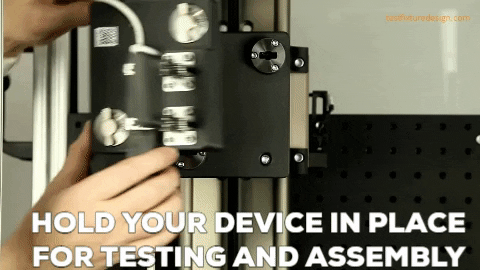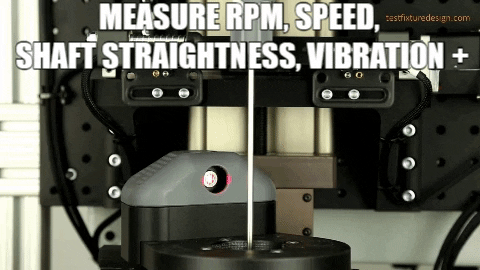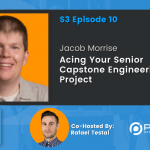Ajay Panwar | Statistical Control Processes, Regression Analysis, and Philanthropy
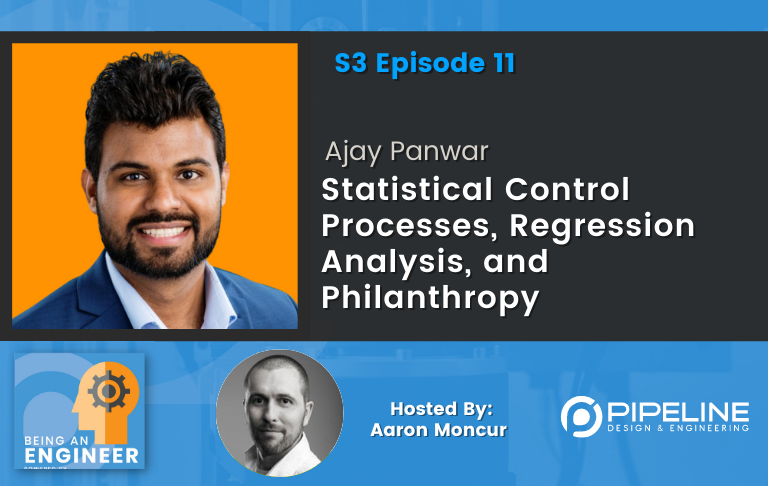
Who is Ajay Panwar?
In this episode, you will learn about statistical control processes, regression analysis, JIT inventory management, and 5S methodology, as well as angel investing, and philanthropy.
Ajay Panwar is a senior engineering manager at Medtronic. He holds a master’s degree in mechanical engineering from Arizona State University as well as an MBA from the University of California, Irvine. In addition, Ajay has a broad range of experience, from working as a design engineer to cofounding a company, angel investing, philanthropy, and leading engineering programs.
EXPAND TO VIEW EPISODE TRANSCRIPTION
SUMMARY KEYWORDS
company, important, supplier, develop, tools, engineer, product, inventory, software, improve, medical device, inspection, building, ajay, statistical tools, customer, helping, class, areas, demand
SPEAKERS
Presenter, Aaron Moncur, Ajay Panwar
Presenter 00:00
Hi everyone, we’ve set up this being an engineer podcast as an industry knowledge repository, if you will, we hope it’ll be a tool where engineers can learn about and connect with other companies, technologies, people, resources and opportunities. So make some connections and enjoy the show.
Ajay Panwar 00:17
I mean, you feel better at the end of the day you sleep better, right? That you are you’re doing something good for the for the community.
Aaron Moncur 00:38
Hello, and welcome to another exciting episode of The being an engineer Podcast. Today we’re speaking with Ajay Anwar, who is a senior engineering manager at Medtronic. He holds a master’s degree in mechanical engineering from Arizona State University and an MBA from the University of California, Irvine. Ajay has a broad range of experience from working as a design engineer to co founding a company to Angel investing to philanthropy to leading engineering teams. So there’s a lot to talk about. Ajay, welcome to the show.
Ajay Panwar 01:13
Thank you, Aaron, for the kind introduction.
Aaron Moncur 01:15
You’re so welcome. All right, the same question I asked everyone to start with what made you decide to become an engineer?
Ajay Panwar 01:23
Good question, of course. So my dad is an engineer by trade. And when I was kid, he exposed me to different machines. He took me to the company. And you know what, that builds the like curiosity in me to learn more. And whenever I visited, I honestly had more questions than answers. So I decided to go and find the answers and end up joining engineering school.
Aaron Moncur 01:51
That’s fantastic. You mentioned the word curiosity. I think that’s such an important trait for an engineer to have. Do you think that curiosity is something that you’re either born with or not? Or is curiosity, something that can be developed?
Ajay Panwar 02:07
Um, I mean, if you are born with it, I mean, you are God gifted, but it can be it can be developed, right? I mean, the main thing is that, to really ask, why is it happening? What it’s happening, right? I mean, the why word is that goes with curiosity, right? I mean, if you can keep on asking questions, the things will get more interesting, more enjoyable, right? And then you are kind of like, getting into the person that hey, I mean, how does a certain things is working? And that’s basically becomes your hobby.
Aaron Moncur 02:42
Yeah, yeah. For all you engineers out there, especially the younger engineers wondering about what what makes a good engineer? Well, there are a few answers, but I think one of them for sure is curiosity is developing that innate sense of wonder, and curiosity about the world?
Ajay Panwar 02:57
Absolutely.
Aaron Moncur 02:59
Well, let’s see, you’ve been in the medical device space for for quite a while and one of your areas of expertise is class three medical devices. For those who aren’t familiar with this space, can you share a little about what a class three medical devices and how they differ from a class one or class two medical device?
Ajay Panwar 03:20
Of course. So I think the main difference between these medical devices, classes are the risk. So the risk term is pretty important here. I mean, these classes are defined from the low risk to the high risk, low risk to the patient, right? Correct risk to the patient safety. And class one device being the low risk device, class two, moderate risk, and class three being the highest risk device. And class three is, is what required the pre market approval. The example for class three could be as implantable devices that stays inside the human body for the intended time period. And class one being as little as a bandaid that you put on the skin. So you can see the drastic difference from class one up to the class three devices.
Aaron Moncur 04:18
Yeah, yeah. And I’m sure this varies quite a bit. But can you give us a general sense of the timelines associated with developing like a class one device versus a class three devices? As a class three devices? Is that typically measured in months or in years? Or or in decades?
Ajay Panwar 04:37
Yeah, so most of it, it’s dependent on the intended use of the device. Class One takes, I mean, as little as maybe a couple of months to develop the device. Because even though it’s a it’s a low risk device, there are certain kind of regulations we need to follow up. There are certain kind of testing we need to do in the product. Right? I mean, you can think of band aid is just going on to yours. But sometimes I mean, we’ll have to do the sensitizes. And test, like, Hey, is that band aid the chemical components and being used is actually sensitive to a certain geography of people. Right? So that requires those testing. And I mean, class three, I mean, that could go from maybe multiple years, maybe like couple of years to up to a decade. I mean, those devices are highest risk devices, right. So there are a lot of testing that goes into it, there is going to be cancer testing, we will need to do right, to make sure that it’s not carcinogenic, right. It’s not basically building cancer in people. Because it stays inside the body for that timeframe, right. I mean, it could develop that chemical composition and could negatively impact the person’s right. So it could it could be majors into here. But then again, it depends on the intended use, how much technology you already have, how much you are actually building, and that defines the timeframe of the of the development, and then you work closely with the regulatory bodies like in us, we have FDA. In Europe, we have notified bodies, you work closely with them in making sure you are you are achieving the quality target for that product.
Aaron Moncur 06:18
That’s a great explanation. Thank you. Another area in which you have expertise is design of experiments and statistical process control. Can you talk about what what are a few of your favorite statistical tools that engineers listening to this could learn about and start using in their own work environments?
Ajay Panwar 06:41
For sure, this is my actually one of the favorite topic statistics. So let me let me talk about a methodology first, which is important whenever we talk about statistical process control, or maybe improving something. So the methodology is DMAIC, D-M-A-I-C, it’s, it’s a process where you define the problem. And then you define what actually you are improving, right. So DMAC stands for define, measure, analyze, improve, and control. And statistical tools are used within the analyze and improve phase to define what you are improving how you are improving those things. So talking about statistics, and talking about demand is pretty important. And this is something anyone can start using it right? When you think about improving something, you basically have an idea of what could be the solace and looks like but before jumping on this. So listen, I want everyone to think about what actually is the problem? What are you actually solving, right? So do the analysis part very thoroughly, and then jump on to the Improve Phase. And now jumping on to the statistical tools, there are two tools, which are one of my favorites. One is regression analysis. So regression analysis is basically finding out how many variables that you have and out of those variables, which one are important to you, right? I mean, when you are working on an engineering problem, there could be multiple of them, maybe 10, 15, or hundreds of them, you want to know which one are important, right. And then you run a regression analysis to identify those. The second is the capability analysis. Once you identify those, you want to know how well a given data that you have it meets the specifications. So you run the capability to see that if you are actually if your data is telling you that your spec is capable to meet that requirement, right, or how far you are out from there. So those two analysis are pretty important. And anyone could be able to learn those pretty quickly. And once you start playing with those numbers, I’m pretty sure you will enjoy what you’re doing.
Aaron Moncur 08:58
Can you think of an example maybe when you used either one of those tools in in your work, you know, to solve some some real problem?
Ajay Panwar 09:10
Yeah, so I mean, those two tools are pretty handy for statistics people, I mean, for engineers who work into quality area. So one of the things that I did was, we had an inspection is to where we were basically inspecting everything. And we did not knew, I mean, where we can reduce the inspection or possibly where we have high risk lies. So what we did was we we ran the inspection requirement for all the components or sub assemblies that we had, and identified the opportunities where we could reduce those inspects. And so one of the thing we wanted to do is do the capability analysis on certain selected sub assemblies and see where do they stand? Are they consistently meeting The spec requirements are not if they are what could we do to reduce the inspection? Right? If they are consistently meeting and you know that you have the data, which is telling you that for the last maybe one year or two year, whatever you are producing or whatever you are receiving from your suppliers, you are consistently meeting the requirements, there are no non conforming thing happening. So what how can you use that data and reduce the inspection? So, we analyze that data thoroughly and identified it and then identified the portion it is how can how can we how can we reduce that inspection. And that basically lead to the increase productivity, reduce inspection. And similarly, meeting the same quality goals that we had previously.
Aaron Moncur 10:44
That’s great, what a great example. So, previously, you’re doing 100% inspection, which obviously, takes a lot of time, a lot of resources, a lot of money. And you’re able to using some statistical tools determine that, hey, we don’t really need to inspect every single one of these we can inspect. I don’t know what it was one in 10, or one in 20, or something like that. And now all of a sudden, your your the resources that needed to be spent on that particular production line have gone dramatically down and can be spent somewhere else. Exactly. Yeah. Yeah. Very cool. Okay. Let’s see. Are there are there any specific? Like software packages or products that engineers who are listening to this and thinking yeah, I like to learn about regression analysis and different statistical tools? Are there any products that they can go out there and buy to, to help with those calculations? Is it all just excel? Or are there some very specific software applications that statistical quality control engineers might might want to have in their tool belt?
Ajay Panwar 11:52
Yeah, so I mean, we can do all of this in Excel, for sure. But there are going to be a bit of play around in making sure you use the Excel correctly. But the tool that I absolutely like is Minitab. Minitab is where you input all the data, and you basically have the tools handy, and then you run the analysis for you. So that tool is available, you can go online, as a student, I believe you can do the trial version too. And then you can, and you can purchase it, and you can start using it for for your purpose. Most of the companies that I have seen, they already have subscription to Minitab. So you should be able to obtain through that and start using it for your professional life.
Aaron Moncur 12:36
Great, it’s really helpful, I think, for people to hear specific names of these tools that go out, go out and start using them. It’s very actionable. Alright, I saw that on your LinkedIn profile, you have some familiarity with inventory control. So this is admittedly like not the most sexiest topic in the world, but it’s one that I’ve never really learned much about. And I’m wondering if you can share a little about some of the tools that you use to manage inventory control, pretend that I’ve been tasked with developing a new inventory control system for a simple product, and I have no idea what I’m doing, what advice would you give me or what tools would you suggest I learned about Hmm,
Ajay Panwar 13:21
so, in regards to inventory control, there are multiple strategies we could use, I mean, it depends on the business type. There are post strategy posts, inventory control, there is pull inventory control, and then there is just in time, so the difference between them is you basically in the post inventory control, you basically have all your inventory ready and be available to ship to the customer, it’s not based on the demand with the pull inventory control is you basically are building the product as the demand is coming up. And that could be used for expensive material or extend expensive product that you are making because you don’t want to have expensive product ready and sitting on yourself, but there is no demand right and just in time is particularly similar to pull pull strategy where you basically are making up to the demand of the customer right. So let’s say you already have the demand from the customer or forecasting is done per your company, right? I mean, you know, how much your customer will be asking this month, how much your customer will be asking next month, and then you are building those accordingly and then shipping to the customer. So one of the important thing in any of this inventory control is the customer order is filled in the timely manner, right. You do not want to lose the customer and it’s filled in the timely manner. So the important factor that I focused when I worked on inventory control is working with suppliers. Suppliers are a critical part of it right? They want to understand what is your demand looks like I mean, they are supplying raw materials to you right. So, you would want to know what which supplier has the highest risk or which supplier has the minimal risk within your inventory management right and then adjust that accordingly. Another critical pace in terms of suppliers is is the sole supplier, single supplier or multiple supplier. So, that is basically sole suppliers or something where you are actually dependent on a supplier because their technology is proprietary and you need that technology for your for your product. And if they go out of business technically you are out of business right and then single supplier is that you only have one supplier for that multiple supplier is mean that you have multiple suppliers for the same raw material, right. So, that is the particular area that I personally focused on in ensuring we are building the relationship with the suppliers and making sure they understand the demand and the planning that we are putting in and most of the company actually actually uses just in time, just in time inventory control strategy, because they try to forecast what the previous year look like and what will look like in the future, right. And then they develop the demand and planning tool and based on that they are building the product and based on that they are serving to the customer. The last piece I could highlight in terms of inventory control is FIFO first in first out, which is important because you would want to make sure there is a continuity flow of inventory. Right? I mean, the the oldest piece is the one that is getting out first, not the one that you are currently building, right? That way you are you could be having a huge inventory problem where I mean, you have the inventory sitting on the on the cells, but you are not even selling it right or sometime it is expired, and you don’t even need it right. So those could have some repercussions.
Aaron Moncur 17:08
Very interesting. I assume if people want to learn more about any of these processes, they can go out and search online and find books and courses and things like that.
Ajay Panwar 17:17
Correct? Yeah. And I did not judge on the software, like what software you can use for inventory control. There are multiple out there. I mean, SAP is the popular one. All the big companies uses SAP, and those are basically making sure the strategies are inputted into that software. And that software basically manages all these things for you.
Aaron Moncur 17:39
Yeah, great. Are there software’s out there that might be useful for smaller businesses? SAP, I think is typically used by a kind of enterprise level companies. Are you familiar with any good good software out there that is more relevant for for a smaller company?
Ajay Panwar 17:57
I mean, I will I will say even for the enterprise businesses, they sometimes uses no software. I have seen big companies are just completely paper based. And they are absolutely doing best. I mean, there is no Yeah, so I have audited them. And they are even better than the company who are using this good software. So those are surprising to me. So it’s basically it’s not really about the software, I would say it’s really about how you set up the process. The process is important. The other software, if I could pinpoint is acuity. QA D is another software that you could use. I mean, I don’t know how pricey or expensive it could be. But I have seen company using QED as well, which is kind of like a smaller version of SAP. So I assume it’s going to be a little bit cheaper to be used for smaller companies.
Aaron Moncur 18:54
Great, great. That’s a big insight that you made there. That it’s not really about the software. It’s about the processes behind it. And even paper based companies can do really well with inventory control. Great. Okay, well, I’m going to take a very short break here and share with the listeners that Team pipeline.us is where you can learn more about how we help medical device and other product engineering or manufacturing teams develop turnkey equipment, custom fixtures and automated machines to characterize inspect, assemble, manufacture and perform verification testing on your devices. We’re speaking with Ajay Panwar today, you have some experience as an ISO 1345 auditor, which is kind of like the medical device industries version of ISO 9001. What are a few areas that you commonly see teams falling short when you audit them.
Ajay Panwar 19:53
So I think you pointed out the good good point there is 1345 is the medical device industry version of 9001 they are they are very similar in nature. So one thing about standards is that standards are subjective. And they are subject to interpretation, right? I mean, they are little bit vague. And they mean it depends on the scope of work for a company. So, let’s say a company is only needing to do a certain portion of that 1345 or 9001. And depending on the certain areas they are focusing on like design and development, then they make sure that they are only focusing on to those areas more deeply than the other elements of that standard. So, I’ll keep to the point and talks about the areas of gap. The main areas of gaps are the risk management. So, one of the biggest difference between 1345 and 9000, what is the risk management, how our risk management of the product is executed is important for our medical device compared to just the general 9001 standard. And companies sometime takes time to realize what are the important aspects of risk management they need to consider? Like how are they making certain decisions, if you have the risk management turned properly, those decisions will become much easier for you, right, the highest risk item will require more scrutiny than the less risk item. But if you do not have the risk management and properly, then basically either everything is the priority or there is nothing as the priority, right. And then you end up making either good decisions or bad decisions. So those are pretty risky. The another area is the purchasing control. Purchasing controls is something where you are putting efforts on to controlling your sub tier supplier suppliers from where you are buying your raw materials from, or somebody who’s making a sub assembly for you. So those areas are important to understand like what kind of quality control or the governance that you would want to put on to your supplier suppliers, you are auditing them within the timeframe that you have decided. But sometimes I have seen the customers or maybe these direct suppliers, they are not actually focusing effort onto those, and they are letting their sub tier suppliers do whatever they want to do. So that becomes a bit risky in terms of 1345. Because it’s a medical device, right? We if they if we are making any change, then we would want to know and we would want to know what is the impact of that. So those two areas are a big one that I have seen some gaps around.
Aaron Moncur 22:48
Yeah, that makes a lot of sense. I liked when you were talking about the the the risk factors, I went through the 9001 standard myself, as part of an exercise for pipelined. My company, and one of the very interesting parts of it was was the risk section of the standard. And I, I found several examples and kind of we put together our own version of this process that you go through when making decisions. And it’s a very orderly, very well structured process, where different risk tolerances are well defined, and certain values associated with different areas. And I just I found it as an engineer, very almost comforting, you know, to to have this process to go through to make decisions that are risk based. So even for companies out there who are not required to be ISO certified, are there any quality related best practices that that you’d recommend engineering firms consider implementing to enhance their ability to develop new products, even if they’re not regulated? Medical devices?
Ajay Panwar 24:00
Yeah, so I mean, even though ISO standard may not be the requirement, right, but I mean, I would I would highly recommend every company to go out and get the certification, even though it’s not required. It will it will help you not with the with just a certification, but it will help you. So the credibility to your customers that hey, I mean, we understand the quality requirements of the product, we understand what are the different things that goes into and how to mitigate the risk or how to improve the process, how to reduce the cost, right? All of those are important to understand. But let’s say if it’s not required and the companies do not want to go there are there are a couple of tools that the company or every company should focus on. The first one to start with is five s. Five S stands for sort, set in order sign, standardize and sustain it basically To make sure you are organized in, in a much metrological way, you understand the standardization within the company, right. And then you have the processes which are set in place, right. It’s not like one person is doing the things, they’re maybe their own way and the other people are doing in their own way, right? If you have the processes in place, then it’s basically improves, like how everyone is doing the thing. And then they finally sustain, like every company wants to sustain, right? That’s keeping them in the business. So five s is something which is important, and I believe every company should understanding. The other is the Kaizen, Kaizen is a continuous improvement, right. So even though you have the processes in place, I think it’s important for you to continually improve, whatever you are doing currently, to what the future will will look like. Right? That way your customers will believe that you are actually focusing attention onto those. The last and the most important one is quality policy. So you would want to make sure you actually have a quality policy within the company. And the management should sort of basically endorse it right? If it’s not top down, then people will not really think about what what the quality is, but just to really focus on what really are you trying to serve, right? And put those words into the company and basically enhance it, every time you use it. It builds the credibility, right, it builds that your company is actually focused on quality, even though you are not an ISO certified company.
Aaron Moncur 26:38
Yeah, that was another really important insight for me when I went through the The 9001 process is is previously I had been under the understanding that ISO 9001 was just for manufacturing, right? If you’re making this widget, then ISO 9001 is going to help you ensure that you have high quality standards for manufacturing this widget, which it does. But it’s a lot more than that. It gets into every single aspect of your whole business. You talked about the quality policy, I found that the quality policy is not just for the widget that you’re making, it’s for the entire company. It kind of sets the focus and maybe not the vision, but the the focus anyway for the entire company, which which I found to be a very, very valuable, useful exercise to go through.
Ajay Panwar 27:32
Absolutely.
Aaron Moncur 27:34
Well, you’ve participated beyond engineering in several philanthropic activities. How did you get into philanthropy?
Ajay Panwar 27:43
For sure, yeah, I mean, philanthropy is very near and dear to me. So I first got involved in philanthropy activity through my employer, I worked for Medtronic. And I led a program to develop a training model for pediatric nurses to basically upskill them to increase their knowledge and skills. And that was for specifically for underdeveloped countries, or countries where all of these skills are not taught when they are going through the college degree or through the certification programs. And then after that, it just naturally led to other activities. As I participated into one, it led to other opportunities for me to get into. But one thing that is for sure is, my wife and I are very keen on helping others. It’s just not a hobby. But we are fascinated to give back to the community. And we both feel that we have done good with our life, right through our hard work through the community support. So it is time to give back to the community who helped us reach where we are. Right. So that is very important. And that’s basically Dr. Our mission. And that’s basically Dr. What we are doing currently and always finding an opportunity, what can we do for the community, not just where we are living, but around the globe?
Aaron Moncur 29:06
Yeah, that’s great. What can you share a couple of the philanthropic activities that you’re participating in?
Ajay Panwar 29:12
Yeah, so one of the other one that is about to start through my company is also helping the nonprofit organizations and helping them set up different various systems and then helping them basically improve their efficiencies and how they are doing certain activities. Another one that I’m doing personally, through through myself is building a platform where we can help the undeserved or I don’t know I mean, underserved children’s or underprivileged children’s would be the right term and see how we can help them support either through upscaling them right providing them the knowledge prodding them to mentor say, providing them the resources they need, specifically again in the underdeveloped countries because there are There are kids who are who are smart. I mean, there are kids who can do a lot better with their life if they have been given opportunities, if they have been given the these challenges, and they know what is out there. So if we can just spend maybe an hour or two hour per week and give them the guidance, I mean, they could thrive. And if you can change the life of one person, I mean, you could have changed the entire world.
Aaron Moncur 30:23
That’s wonderful. inspiring to hear that and it must be extremely fulfilling to you as well.
Ajay Panwar 30:31
Yeah, that is correct. I mean, whenever we talk, and whenever we go out and and start finding these opportunities and talk to these kids, I mean, these are these are very fascinated, just keeps us more like motivating more and more.
Aaron Moncur 30:43
Yeah, yeah, there’s probably not many better feelings in the world than knowing that you genuinely helped someone improved someone else’s life.
Ajay Panwar 30:53
Right. Yeah, absolutely. I mean, that is that is actually the Lectro statements. I mean, you feel better at the end of the day, you sleep better, right, that you are, you’re doing something good for the for the community?
Aaron Moncur 31:04
Yeah. Well, something else you’ve done that I think is really interesting is Angel investing. Can you share a little bit about what is Angel investing? And how does one even get into that? Sure. So,
Ajay Panwar 31:16
um, in entrepreneurship, boiled, there are multiple stages, when you have to raise funds, right? I mean, you, you may, I mean, after you are making progress, you would want to have more funds to develop the company, right? It starts with seed funding, and then comes the angel funding, and then you go into the venture capital funding. So angel investing is where private investors like myself or someone else, you who basically invest on too small or new ventures using our own money. And in the venture capital, that uses an investment fund, where angels we are using our own net worth. And that is a little bit of different, right? I mean, your money is tied with the company, you are invested personally into that company. So that’s why it’s called angel investing, right? You are an angel to the new venture that you are, you are helping. And the best way to get involved is to work through startup ecosystem. There are multiple ecosystem that you could work around, I mean, the one that I live currently in Orange County, Orange County has its own ecosystem. If you have gone through the business school, then business schools has their own ecosystems, right. So work through those. And I think the intent, and the focus would be here to help the companies you believe in. And you could support based on your expertise, right. So that’s how I got involved. And that’s how I started investing into those companies is to really find out right, what companies are out there, right, that I really believe into, and then give them a mentorship and judging, and then also the money they need to develop and grow.
Aaron Moncur 33:03
And when you’re an angel investor, are you mostly investing your your your money in the company? Or are you investing a lot of time as well? Or does it just depend? You know, every situation is a little different?
Ajay Panwar 33:15
I think it depends. Every company is different, right? I mean, sometimes if you are an angel investor, then typically you are putting money into it. Right? But sometimes it’s different where some companies ask for mentorship and guidance. And that is important, particularly in the healthcare system. So the field that I work into, I had, I had been through the entrepreneurship route. I have, I have been into new ventures competition, I have presented, and one thing that I have learned and felt that the healthcare community and also the medical device company requires lot of guidance and mentors up. And that is because how complicated the US healthcare system is, I mean, everyone who is thinking to go into this type of activity, I mean, they take a step back, and they’re like, Oh, my God, I mean, this is this thing is messy. I mean, how can I get involved? I mean, what are the different thing I need to do? So, I mean, that’s where I kind of like started getting involved and see how can I bridge that gap? How can I help these companies and similarly with medical device, right medical devices highly regulated? Sometimes this small companies and the one who are developing the breakthrough technologies, they do not have idea like how to meet certain regulations, they have limited understanding, right? They have limited funds, so you can be the angel for them, and then try to provide them the guidance, try to provide them the understanding of what the regulations look like, how can you launch the market, which market is actually good for you to launch the product? So those activities are pretty important. And that’s where I kind of started getting into and providing and bridging
Aaron Moncur 35:00
Get neat, very cool. And angel investing typically you’re not seeing like millions of dollars, right? This is kind of a step before those those large, typically venture capital size investments. Is that right?
Ajay Panwar 35:12
Yep, that is correct. It could be like 1000s of dollar only? Yeah.
Aaron Moncur 35:16
Okay. All right. Well, we’ve just, uh, I think a couple more questions here. And then we’ll we’ll wrap it up. What are a few tools that you love to use that this could be a physical tool, it could be an app or piece of software, just anything that you think helps you be effective and getting work done.
Ajay Panwar 35:36
The important thing for me is really the time management. And I believe everyone has that an urgency, right? So a physical tool, I use his to do list. It’s a very small tool, right? I mean, you can use any available free applications online, I use his Microsoft to do list. And the reason being that is helping me or is become my best friend is, I feel like whenever I’m not working, or whenever I’m just doing or sitting in front of TV, I have a lot of things going in my brain that hey, that thing is important. The other thing is also important. But whenever I sit in front of my laptop, and I started working, my brain is completely blank. I’m like, What do I need to work on? Right? So to get my priorities straight, to get the peace of mind, I just list them down into to do right, it just take few seconds, and then mark the priority, right? So you are you basically known that you captured it, you know what to work on, you know the priority. And when you started working on it, you have the list on what to work on. And if somebody has contacted you to work on something, put it on the to do list, and then get to it when you have the time, right? Because I one thing that I try to minimize is to memorize everything. Because I mean, as a human being, we cannot memorize everything. And I do not recommend using our brain memory to store everything right. There are tools which can help you to be more productive and more efficient.
Aaron Moncur 37:06
Yeah, I love that you’re talking about that. I don’t think I will ever get tired of talking about to do lists or checklists there. Like you said, they’re seemingly so small, but they’re so hugely powerful. In fact, I think if someone were to ask me, What’s the number one thing you can do to succeed in business or succeed in your professional career, I’d say get really good at making lists and checklists to do lists. There’s a book written by a physician adventurer Atul Gawande called The Checklist Manifesto. One of the best books I’ve ever read. That’s a great one for anyone to read. If they don’t quite believe in the power of lists. Checklists, go read. Atul Gawande is The Checklist Manifesto. Wonderful, wonderful. Book and just such a powerful tool. I’m glad you brought that up. Okay, well, Ajay, how can how can people get a hold of
Ajay Panwar 37:55
you? Yeah, so the best way to get in touch with me is LinkedIn. I am active there. I check that frequently. The best ways to connect with me there send me message, my LinkedIn profile it is LinkedIn dot n, slash forward slash one. We’re RJ PA and wh er r AJ a way forward slash, and then you will get to me if you just search my name and put the title I think you should be able to see me at the top two.
Aaron Moncur 38:29
Wonderful, we’ll put a link to your LinkedIn profile in the show notes as well. Awesome. Okay. Well, I do thank you so much. I really appreciate you spending the time with me today. It’s been great hearing about your experience and your background and, and just awesome hearing about the the different insights and tools you’ve been able to share with us. So thank you so much for your time today.
Ajay Panwar 38:50
Thank you, Aaron, thank you for having me here. I hope this was helpful to the audience. And thank you so much again.
Aaron Moncur 39:00
I’m Aaron Moncure, founder of pipeline design and engineering. If you liked what you heard today, please share the episode. To learn how your team can leverage our team’s expertise developing turnkey equipment, custom fixtures and automated machines and with product design, visit us at Team pipeline.us. Thanks for listening
We hope you enjoyed this episode of the Being an Engineer Podcast.
Help us rank as the #1 engineering podcast on Apple and Spotify by leaving a review for us.
You can find us under the category: mechanical engineering podcast on Apple Podcasts.
Being an Engineer podcast is a go-to resource and podcast for engineering students on Spotify, too.
Aaron Moncur and Rafael Testai love hearing from their listeners, so feel free to email us, connect on Facebook, Twitter, Instagram, and subscribe on Apple Podcast and Spotify!
About Being An Engineer
The Being An Engineer podcast is brought to you by Pipeline Design & Engineering. Pipeline partners with medical & other device engineering teams who need turnkey equipment such as cycle test machines, custom test fixtures, automation equipment, assembly jigs, inspection stations and more. You can find us on the web at www.teampipeline.us.
***
Valued listener, we need your help getting to 100 podcast reviews. Win a $50 Amazon Gift card if you leave us a review on the Apple Podcasts. Simply email a screenshot of your 5-star review to Podcast@teampipeline.us, the email will be in the show notes. We will announce 5 lucky winners at the end of the first quarter in 2022.
You’ve read this far! Therefore, it’s time to turn your headphones up and listen now to this episode to learn all these. Don’t forget to tell your friends who might like this too!

